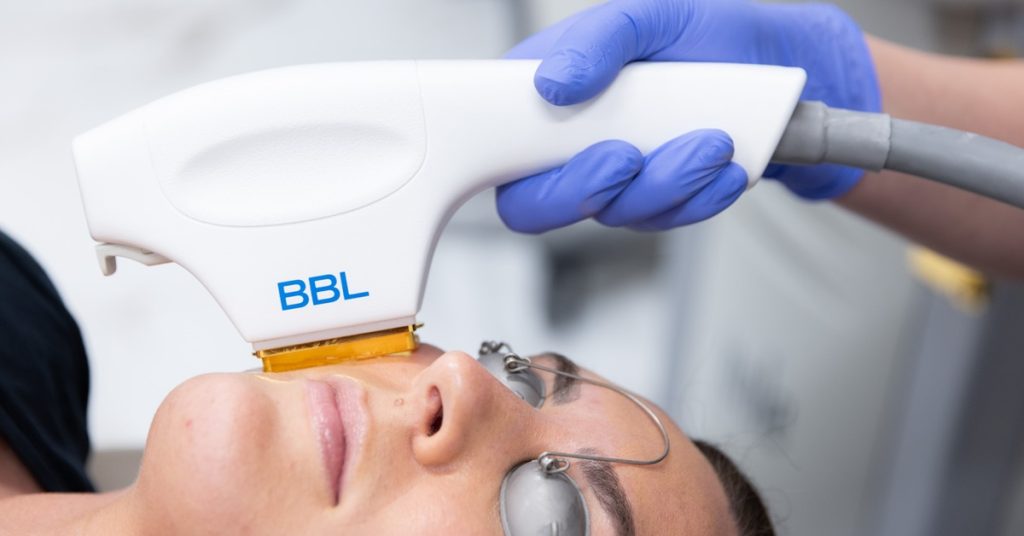The Marietta Dermatologist’s Guide to Moles

Moles are a common skin condition that can affect nearly anyone, regardless of age or background. In this guide, we’ll explain everything you need to know about moles, from their appearance and how they’re classified, to what causes them and how to determine if a mole is cancerous. We’ll also provide self-care tips, as well as when it’s necessary to see a dermatologist.
What are moles and why do we have them?
Moles are small, dark spots on your skin that range in size and shape. They can appear anywhere on the body and may be flat or raised, and sometimes they have hair growing from them. Moles are formed when the cells in the outer layer of your skin (epidermis) grow together in clusters, forming a growth on your skin.
Moles are a common occurrence and typically harmless, but it is still important to keep an eye on them for any changes or growths that could indicate something more serious. If you have noticed a new mole, or if one of your existing moles has changed in shape, size, color, or texture, it is best to seek the advice of one of our board-certified dermatologists in Marietta.
What causes moles to form on the skin?
Moles are usually caused by a combination of genetics and sun exposure. The sun’s ultraviolet (UV) rays can cause the cells in your skin to grow in an abnormal way, which can lead to the formation of moles. However, some moles may be present at birth due to genetic factors. It is important to note that mole formation does not always indicate skin cancer, as it can be benign or pre-malignant.
Are there different types of moles?
Yes, there are different types of moles. Most commonly, moles are classified as common acquired moles (CAM), congenital nevi, and atypical nevi. Common acquired moles are the most common type of mole and usually develop during childhood or adolescence. Congenital nevi appear at birth and can range in size from small spots to large moles. Atypical nevi are larger or darker than the average mole and may be irregular in shape with uneven edges.
Can moles be hereditary?
Yes, moles can be hereditary. If you have a family history of moles or skin cancer then it is important to speak with one of our experienced Marietta dermatologists about your specific situation. They can provide an in-depth evaluation and make sure that any changes are caught early on.
Can moles be itchy or painful?
Yes, moles can be itchy or painful. This could indicate an infection or another issue and should be evaluated by one of our experienced Marietta dermatologists. If you have noticed any changes in your moles or if they are itchy or painful, then call to schedule an appointment at our Marietta office. Our board-certified dermatologists can provide an evaluation and discuss the best treatment options for your needs.
Are moles dangerous or a sign of cancer?
In most cases, moles are harmless and have no cause for concern. They are simply a reflection of the skin cells that have grown together in one spot. However, it is important to keep an eye on any changes or growths that could indicate something more serious. If you have noticed a new mole, or if one of your existing moles has changed in shape, size, color, or texture, then call to schedule an appointment at our Marietta office.
It’s also important to be aware of any moles that have certain characteristics that could indicate melanoma (skin cancer). This includes any moles that are asymmetrical with irregular edges; larger than ¼ inch across; vary in color or have shades of tan, brown, black, blue, white, red, or any combination; itch; or bleed. If you have any moles that fit this description, then call our Marietta office right away.
Should I be concerned if I have a lot of moles?
Having a lot of moles is not necessarily cause for concern. However, if the number of moles on your skin has recently increased or changed in shape, size, color, or texture, then it may be worth speaking to one of our Mariette-based dermatologists. They can provide a thorough evaluation and make sure that everything is okay.
Can moles change shape, color, or size over time?
Yes, moles can change shape, color, or size over time. This can be normal aging and nothing to worry about, but it is important to keep an eye on any changes that could indicate something more serious. If you have noticed a new mole, or if one of your existing moles has changed in shape, size, color, or texture, then it is best to schedule an appointment with one of our Marietta dermatologists.
How often should I check my moles for changes?
It is recommended that you perform self-exams every month to check for any changes in your moles. This will allow you to take preventive steps when it comes to your health and catch any potential issues early on. When performing a self-exam, look for anything new or different, such as an increase in size, shape, color, or texture of the mole. If you find anything of concern, it is best to call our Marietta office.
Can moles be removed and is it necessary?
Moles can be removed if necessary. Depending on the type of mole, your dermatologist may suggest removing it for cosmetic reasons or to prevent any potential health risks. They will discuss your situation with you and make sure that you are comfortable and confident in whatever decisions you make together about your skin.
How are moles removed and what are the potential risks?
Moles can be removed through a variety of methods, including excision (cutting it out), cryosurgery (freezing it off), lasers, or chemical peels. Depending on the type and size of the mole, your dermatologist will discuss which method would be best for your situation.
It is important to note that there can be some risks associated with mole removal, such as scarring or infection. Your dermatologist will discuss the possible risks with you and ensure that you are fully aware of them before proceeding.
Are there any home remedies to get rid of moles?
There are a variety of home remedies that claim to be able to remove moles, but it is important to remember that these methods have not been scientifically proven and can pose some risks. If you’re considering using any of these methods, then it is best to consult your dermatologist beforehand. They will evaluate your situation and suggest the safest and most effective course of action for your specific needs.
Can moles come back after removal?
Indeed, moles can come back after they have been removed. While this does not happen in every case, it is something to be aware of when considering mole removal. Your dermatologist will discuss your situation with you and make sure that you are comfortable and confident in whatever decisions you make together about your skin.
Can moles develop or appear later in life?
Yes, moles can develop or appear later in life. This is more common as you age, but it is important to be aware of any changes that could indicate something more serious. If you have noticed a new mole or if one of your existing moles has changed in shape, size, color, or texture, then it is best to call and schedule an appointment with one of our Marietta dermatologists. They can provide a thorough evaluation and make sure that everything is okay.
What steps can I take to prevent the development of new moles?
The best way to prevent the development of new moles is to protect your skin from UV rays. Wearing sunscreen and protective clothing can help reduce your risk of developing new moles. Additionally, it is important to keep an eye on existing moles for any signs of change or unusual growth so that they can be evaluated by a dermatologist if needed.
What is the ABCDE acronym and why is it important?
The ABCDE acronym stands for “Asymmetry, Border, Color, Diameter, and Evolving.” This is a helpful tool to remember the signs and symptoms of melanoma (skin cancer). It is important to be aware of these traits to catch any potential issues early on. If you have noticed any moles with asymmetry, irregular borders, varied colors, larger than ¼ inch across, or any signs of change (such as growth), then it is best to call our Marietta office right away.
What do I need to bring to my appointment about moles?
When you come in for your mole evaluation, it is best to bring a list of any medications or vitamins you are taking, as well as any questions or concerns that you may have. This will help your dermatologist provide you with the most accurate and comprehensive advice and treatment plan. Additionally, it is helpful to bring a list of family history regarding skin cancer as well so they can take this into account when evaluating the mole.
How should I prepare for my appointment about moles?
Before your appointment, it is best to avoid any sun exposure for at least 24 hours. This will ensure that the mole is visible and can be properly evaluated. Additionally, you should come to the appointment with a list of any medications or vitamins that you are taking, as well as any questions or concerns that you may have about the mole.
In conclusion, taking proactive steps toward understanding and monitoring your moles is crucial in maintaining a healthy well-being. It’s not only about the aesthetic appeal but also about staying informed and catching potential health risks early. Remember, your skin speaks volumes about your health and it’s essential to listen. If you notice any changes or have concerns about your moles, don’t hesitate to reach out to our dedicated team of dermatologists in Marietta. Early detection is key and, in some cases, can mean the difference between a simple treatment and a more serious one. We’re here to support you, and your skin health is our priority. Contact us today to schedule your appointment.
Sources: Mayo Clinic, Cleveland Clinic, American Academy of Dermatology, WebMD, MedlinePlus



